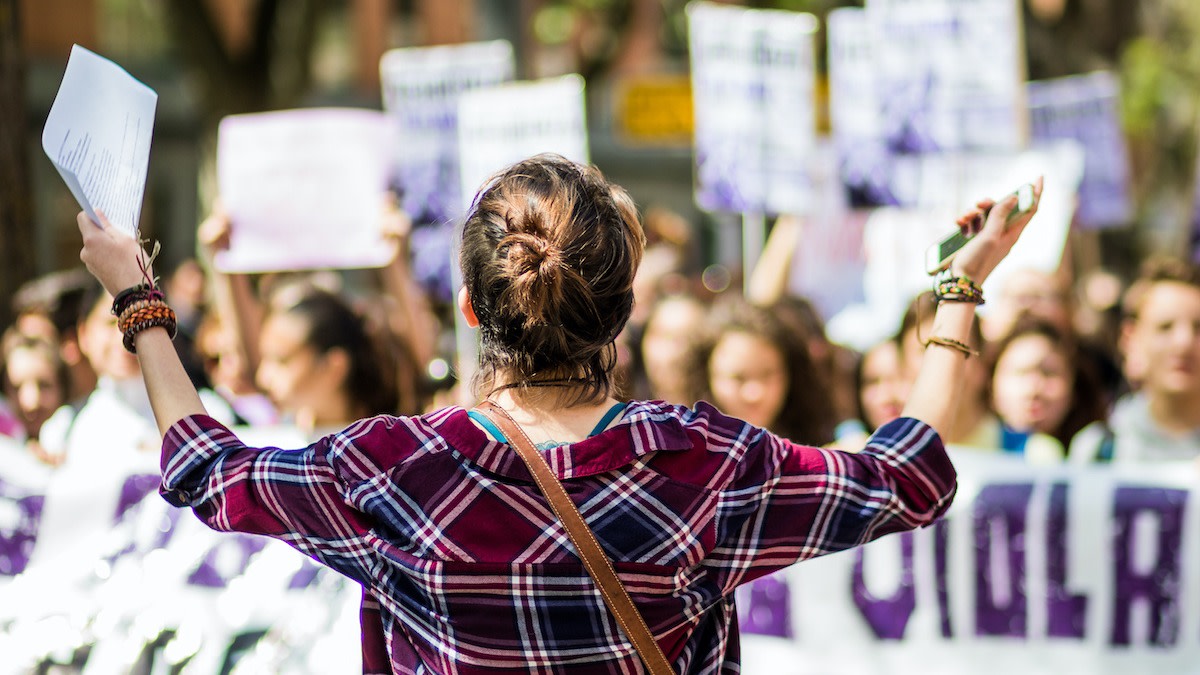Third-Wave Feminism: A History of Third-Wave Feminism
Written by MasterClass
Last updated: Oct 7, 2022 • 4 min read
Learn about the third wave of feminism, a recent period in the women’s movement fighting for equal rights.
Learn From the Best
What Is the Third Wave of Feminism?
The third wave of feminism was a period of political activism that sought to expand civil rights and social equality for women. It succeeded first- and second-wave feminism. Third-wave feminism is generally dated from the early 1990s to the 2010s when the rise of social media inaugurated fourth-wave feminism.
A Brief History of Third-Wave Feminism
Beginning in the 1990s, the third wave of feminism built upon the causes emphasized in the movement’s first and second waves:
- The first wave: In the United States, the struggle for women’s equality and freedom began around the late eighteenth and early nineteenth century with the issue of women’s voting rights. After the Nineteenth Amendment passed in 1920, guaranteeing women the right to vote, the intensity and momentum of first-wave feminism waned.
- The second wave: The second wave of feminism was characterized by an acceleration in political activism and cultural prominence in the 1960s through the 1980s. Second-wave feminism focused on gender-based discrimination and marginalization beyond the legal and political sphere—sexism in the household, institutions of higher learning, and the media. Other key issues included access to birth control and the intersectional effects of class and race.
- The Anita Hill Senate hearings: The beginning of the third wave of feminism is generally marked by the Anita Hill Senate hearings of 1991. Hill testified that Clarence Thomas, a then-nominee for the US Supreme Court, had sexually harassed her. Although he was confirmed despite her allegations, the prominence of the hearings in the culture marked a new era of activism and ferment that sought to dismantle gender exploitation and prejudice.
- “Becoming the Third Wave”: Rebecca Walker, daughter of writer and activist Alice Walker, wrote the 1992 article “Becoming the Third Wave” in response to the Hill hearings. The article is credited with coining the term “third wave.”
- The riot grrrl punk movement: The underground riot grrrl movement that emerged in Olympia, Washington, was another catalyst for the third-wave feminist movement. The subculture of young feminists focused on punk rock music, politics, and sex positivity. Third-wave feminism sought to reclaim femininity and female sexuality.
- The intersectionality of feminism: Activism in the academy expanded the scope of women’s studies and feminist theory in critical discourse and study areas. These studies focused on the concept of intersectionality, a term coined by Kimberlé Williams Crenshaw in 1989. Noting how the effects of class, race, and gender tended to overlap and compound was a crucial aspect of the third-wave feminist movement.
5 Key Issues of Third Wave Feminism
Third-wave feminist activism covered a wide range of issues and theoretical positions. Some of the most critical problems for third wavers included:
- 1. Intersectionality: Many third-wave feminist theorists were concerned with how women experienced layers of oppression, which tended to accumulate and intensify, particularly for poor people of color. Women of color, nonbinary women, non-heterosexual women, and others sought social justice for all, focusing on the adverse effects of class and racial discrimination.
- 2. Reproductive rights: Like second-wave feminists, third-wave feminists prioritized women’s ability to access safe, legal, and affordable abortions, as well as contraception, pregnancy care, and child support. This was especially urgent given the political reactions against previous feminist victories, many of which were being dismantled at the state level.
- 3. Individual empowerment: Third-wave feminism tended to celebrate diversity and individual differences in how women explore and expresse femininity. From the punk rock scene, in which young women circulated zines and bootleg records, to the rise of the Internet, where blogs and e-zines became popular, a prosperous exchange of ideas and styles flourished.
- 4. Violence against women: The problem of violence against women was given particular emphasis by third-wave feminist activists. Noting the persistence of rape, domestic violence, and sexual harassment, activists and writers sought to highlight these problems and seek effective social and legal redress.
- 5. Sexual liberation: The issue of sex, a point of controversy within second-wave feminism, was even more central to third-wave feminism. Third-wave feminist activists and artists sought to use their sexuality as a means of empowerment and expression. Eve Ensler’s prevalent and influential play The Vagina Monologues, which premiered in New York in 1996, was an example of this trend.
What Is the Legacy of Third-Wave Feminism?
There is some controversy over whether or not third-wave feminism continues or has been succeeded by a fourth wave. Regardless, the work of third-wave feminists continues to influence contemporary society. Phenomena such as the Me Too and Times Up movements, the rising popularity of gender studies, trans rights, and increasing focus on the need for comprehensive social reform to achieve true gender equality are all legacies of the third-wave feminist movement.
Learn More About Feminism
Feminism is an intersectional movement with a focus on issues that touch every part of our lives, including reproductive rights, workplace culture, and caregiving. Gain access to exclusive videos on feminism with the MasterClass Annual Membership and get a crash course from leaders Tina Tchen, Gloria Steinem, Amanda Nguyen, and adrienne maree brown.
